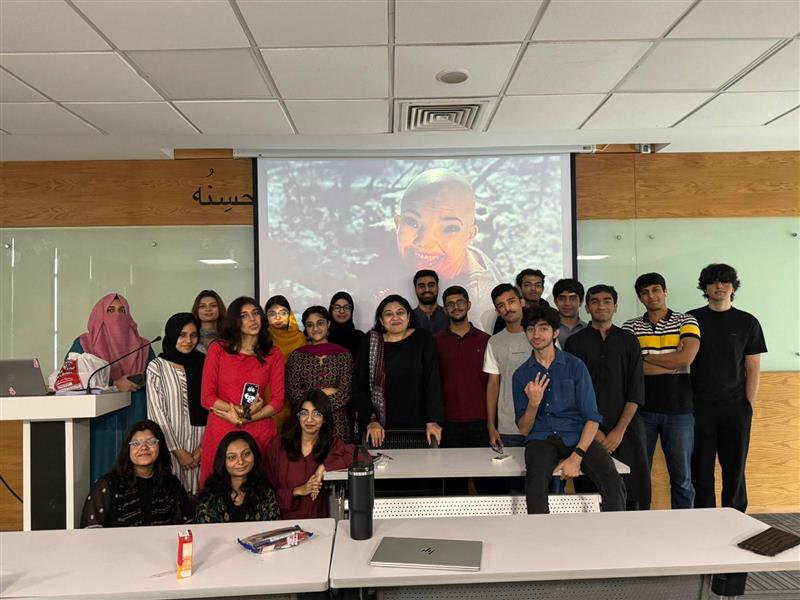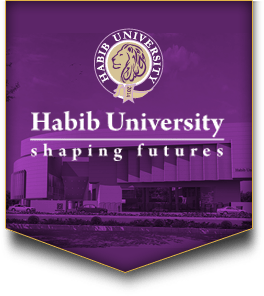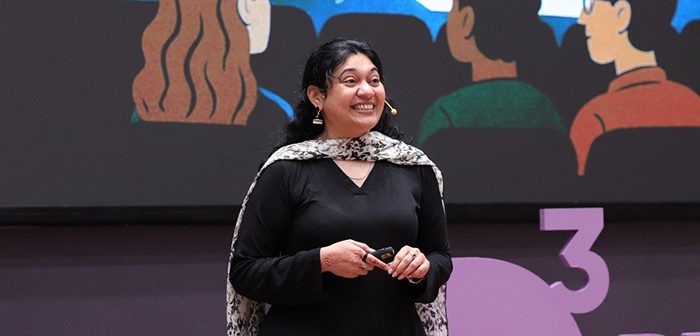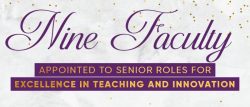How movies are revolutionizing bioscience education for the digital generation
A new approach to teaching bioscience education helps students connect with complex concepts through the movies they already love.
By Humaira Jamshed | Educator and Course Designer
Picture this: It’s a typical classroom, but instead of textbooks and PowerPoint slides, students are watching Contagion, debating whether the pandemic thriller’s viral spread could mirror real-world COVID-19. They’re not just passive viewers, they’re designing surveys about how media shapes public panic, connecting entertainment to epidemiology in ways that make complex science suddenly accessible.
This isn’t science fiction. It’s the reality of “Bioscience in Cinema,” an innovative course that has transformed how students, particularly those outside biology, engage with scientific concepts. This approach ditches dense textbooks for Hollywood blockbusters and fosters open, conversational learning about science.
For non-biology students, science is like that uncle at a wedding who speaks jargon, he’s there, but you avoid him. My mission is to make science as welcoming as casual conversation, using movies to make it digestible and exciting.
From Teacher to Passionate Innovator
My journey began unexpectedly in 2007. Fresh out of graduate school with no teaching experience, I found myself thrown into a biochemistry classroom facing pharmacy students barely younger than myself. Instead of following traditional academic protocols, I started talking naturally, “mixing science with casual banter.”
The response surprised me: “Their eyes lit up. They’re listening!” That spark ignited a teaching passion that would evolve over nearly two decades into a revolutionary pedagogical approach.
The informal, conversational style that emerged from necessity has become my signature method. Students consistently tell me that this open dialogue makes them “feel safe to question anything”, a crucial element in scientific thinking that formal lecture halls often fail to cultivate.
The Netflix Approach to Science
At the heart of my pedagogy lies a simple but powerful insight: students would rather “munch samosas watching Spider-Man than wrestle with a textbook.” So I meet them where they are, using TED-Ed videos and Hollywood films as entry points to serious scientific concepts.
Students tell me this video-based learning makes hardcore biology feel like a Netflix binge, visual, engaging, approachable. But don’t mistake accessibility for lack of rigor. The course draws from the same standard scientific references used in formal bioscience classes, ensuring that while the format feels relaxed, the content maintains academic depth.
This approach proves particularly effective with computer science majors and other non-biology students who might otherwise never engage with topics like immunity, genetic engineering, or plant neurobiology. Through cinema, these concepts become stories they can’t forget rather than facts to memorize.
Freedom as a Teaching Tool
One of my most controversial yet effective strategies involves flexibility with deadlines and creative assessment methods. Rather than rigid due dates that coincide with midterm chaos, I allow students to choose their submission dates, a decision that initially worried me but has proven transformative.
Academic pressure pushes students to outsource creative projects like vlogs or mash-ups. This freedom lets them step out of their comfort zone and dive in, learning video editing or ethical AI use instead of outsourcing.
The strategy works because it builds ownership. Students form diverse groups where members contribute different strengths, one might code a virus spread simulation while another scripts the narrative, like a cricket team passing the ball. This collaborative approach builds confidence and practical skills alongside scientific understanding.
When Students Become the Teachers
Perhaps the most innovative aspect of the course is the “students as teachers” project, where learners select films and create comprehensive lesson plans that distinguish science from pseudoscience. These aren’t superficial presentations, students must draw from primary literature and textbooks to explain real science with depth and accuracy.
Take Mustafa, a computer science major who chose Ex Machina to explore artificial intelligence beyond surface-level speculation. His TED-style video used film clips to unpack “neural gel” brain concepts while explaining real neural networks and the Theory of Mind. The result? Classmates began “exploring where code ends and biology begins,” with some developing final year projects in neuromorphic engineering.
Another pair, Saqib and Farooq, created a role-play podcast around The Last of Us, interviewing a fictional scientist about developing a vaccine for the series’ fungal infection. Their conversation dissected the pseudoscience of cross-species pathogen jumping while explaining real fungal biology and host specificity. The class was hooked, debating whether any intervention could plausibly work.
Science That Sticks to the Soul
The course’s impact extends far beyond the classroom. During COVID-19, students watching Contagion found themselves uniquely prepared to understand viral transmission and public health responses. Their classroom debates about bioterrorism and media panic suddenly became lived experience, demonstrating the prescient power of science-informed media literacy.
Other films create equally profound connections. The Lorax and Wall-E tackle “plant blindness”, our tendency to overlook plants’ crucial role in life. Students discover that plants communicate underground and through the air, with one telling me that the film “made them see trees differently.”
The environmental awareness sparked by these films has led to real-world action. One student, inspired by Wall-E, surveyed her family about recycling habits and started a community compost project. Another group’s research on Karachi’s plant awareness revealed significant gaps, inspiring eco-literacy campaigns.
Expanding the vision
The success of “Bioscience in Cinema” has sparked new possibilities. Building on this foundation, I developed another course—”Bioscience and Philosophy through Science Fiction”—that takes the cinematic approach even deeper. This new offering explores not just the biological concepts embedded in films, but the philosophical questions they raise about consciousness, identity, free will, and what it means to be human in an age of technological advancement.
Where “Bioscience in Cinema” asks students to distinguish real science from pseudoscience, the philosophy course pushes them to grapple with questions that science alone cannot answer. Films become jumping-off points for examining ethical dilemmas in genetic engineering, the nature of consciousness in AI, and humanity’s relationship with technology and the natural world. It’s a natural evolution that demonstrates how film-based pedagogy can bridge not just science and entertainment, but multiple disciplines in ways that enrich student understanding.
A Model for Modern Science Education
My approach addresses a critical challenge in science education: making complex concepts relevant and engaging for students who don’t see themselves as “science people.” By using familiar cultural touchstones, blockbuster films, I create bridges between entertainment and education that traditional pedagogy often fails to build.
The method proves particularly valuable in our current era of scientific misinformation. Students learn to question what they see, distinguishing between plausible science fiction and pure fantasy. They develop the critical thinking skills necessary to navigate a world where scientific literacy is increasingly crucial for informed citizenship.
My hope is that they’ll watch every film with a scientist’s eye, carrying these lessons for life. In an age where science shapes everything from climate policy to artificial intelligence development, this kind of lasting engagement may be more valuable than any grade.
Inspiring Educators Worldwide
The impact of Humaira’s innovative approach has extended far beyond her own classroom. She was recently invited to an international conference to train faculty from diverse fields on how to use movies as teaching tools. The workshop brought together educators from sciences, humanities, and social sciences—all seeking to replicate the engagement and critical thinking that cinema-based learning cultivates.
What started as my solution to making biology accessible has become something bigger. Faculty from history, ethics, engineering, and even mathematics are discovering that movies can be powerful teaching tools in their disciplines too. The training sessions focus not just on selecting appropriate films, but on designing discussion frameworks, creating authentic assessments, and building the kind of open classroom culture where students feel safe to question and debate.
The Ripple Effect
The success of “Bioscience in Cinema” suggests broader implications for education in rapidly changing fields. Science isn’t just lab coats, it’s the AI in films, the plants we ignore, the pandemics we fear. By connecting academic content to cultural experiences, educators can create learning that resonates beyond the semester.
My challenge to both educators and students is simple but profound: “Find your science on the screen. Ask: Is it real or pseudoscience?” Whether through blogging about a film’s scientific accuracy, surveying friends about environmental awareness, or sketching lesson plans, the opportunities for engagement are endless.
For educators, Humaira’s model suggests that giving students creative freedom and meeting them in their cultural spaces can unlock engagement that traditional methods miss. For students, it demonstrates that scientific thinking isn’t confined to laboratories, it’s a lens for understanding the world that surrounds us on screens and in our daily lives.

About the Author:
Dr. Jamshed is an Associate Professor of Integrated Sciences and Mathematics at the Dhanani School of Science & Engineering, Habib University. She holds postdoctoral fellowships from the University of Alabama at Birmingham and Aga Khan University, with research focused on intermittent fasting, plant-based diets, circadian metabolism, and cardiometabolic health. She is a published scholar and an active member of the American and Canadian Societies for Nutrition.




